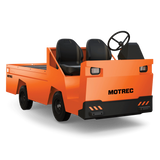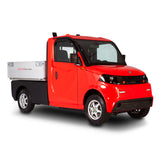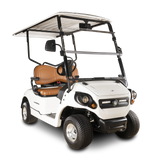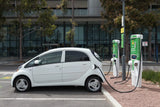EV sales are growing – is this also Kickstarting the Renewable Energy Revolution?

Australia’s appetite for electric vehicles (EVs) is growing year by year. 3.8% of all light vehicle car sales in 2022 were EVs, up from 2.05% the previous year; an increase of 85.3%.
However, there remains significant barriers to entry when it comes to owning EVs. This includes price, “range anxiety”, and a perceived or real lack of charging infrastructure.
In the race to reducing carbon emissions and getting to net zero by 2050, EVs must also run on renewable energy to gain the full benefit of road transport decarbonisation efforts by the Government, such as the Driving the Nation initiative that seeks to accelerate EV adoption and transition.
There is a broader concern for the electricity grid as a whole – can it support faster EV adoption, and where will the energy be coming from?
The anxieties of EV ownership
As of 2023, EVs still cost more to purchase than comparable Internal Combustion Engine (ICE) vehicles.
This is despite evidence to suggest that the cost of ownership post-purchase is lower in terms of “fuel” costs (electricity) and maintenance costs. According to the ABC, EV service and maintenance costs are 70% cheaper per kilometre than ICE vehicles.
“Range anxiety” or the very real concern that an EV will run out of battery before making it to a charger is also easing, with new DC fast-charging and ultra-fast charging stations rolling out across the country.
One such project is the joint NRMA-Government highway electrification project, aiming to install 117 fast charging stations around Australia’s national highways with an average distance of 150km apart. These fast chargers can charge newer, higher-capacity EVs with 400kms of range in under 15 minutes.
However, the net benefit is lost if the energy being used is being extracted from non-renewable sources such as coal or gas. There is also a concern that a sudden increase in EV purchases will stretch our electricity demand to the limit.
Experts and research suggest that these concerns can be allayed by how the transition is managed.
Smart EV chargers can re-route power to charge vehicles when demand is at its lowest and electricity is at its cheapest. This can be managed by electricity network operators.
Vehicle-to-Grid (V2G) technology which is being trialled in Canberra by Actew AGL can also draw upon stored energy in vehicles to support the grid when cars are idle. Cars such as the Nissan Leaf have this “bidirectional charging” technology built in.
The Chargefox charging network also demonstrates how renewables can power EVs, with its network of 22 ultra-rapid chargers linking all the Eastern Seaboard and their capital cities, including stations in Adelaide and Tasmania.
Some innovative companies are looking to the skies for renewable energy. Melbourne’s Applied Electric Vehicles automated modular EV design have solar panels embedded on car roofs, generating as much as 60% of its power from the sun – which could give rise to the great Australian EV road trip.
Using these kinds of technologies could improve grid stability and support the more heavily distributed electricity network of the future, according to EV fleet transition consultants Evenergi.
All these innovations will spur on Australia’s commitment to net zero and a renewable energy future.





